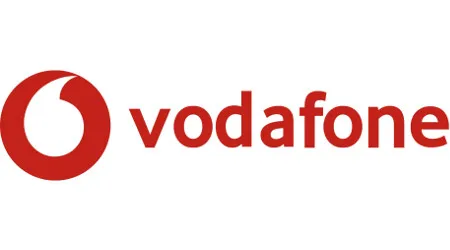Not all mobile phones are created to work in every possible location across the globe. The wide variety of mobile network technologies and frequencies means that a phone built for one market won't automatically work in another country, even if there's a model of the exact same phone built for that location.
If you're buying a phone from overseas, or you're a traveller or migrant planning to travel to Australia, it's worth checking that your handset of choice will actually function on Australian network frequencies.
The first step is to identify your phone and the model sold in your country. You should be able to find that information on the device manufacturer's website or from the carrier you acquired the phone from. Those details should include the compatible frequencies that your handset uses, which you can match against the table below.
Australian network frequencies
| Australian carriers | 4G | 5G |
|---|---|---|
Telstra | 700MHz/900MHz/1800Mhz/2100MHz/2600Mhz | 3.5GHz |
Optus | 700MHz/1800Mhz/2100MHz/2300Mhz/2600Mhz | N/A |
Vodafone | 850MHz/1800Mhz/2100MHz | N/A |
No matter mobile carrier you opt for in Australia, they all currently operate on networks owned and operated by Telstra, Optus or Vodafone. Local brand TPG originally planned on building its own mobile network in 2018, although it has recently canned those plans for the time being.
The other factor you'll need to consider if you're bringing a phone you're already using overseas into Australia is whether it's locked to your current carrier. Contact them before you travel to see if your phone is locked, and if it is, what process is needed to unlock it. Fail to do this, and you could be stuck with a handset that will only work with your current country's SIM at significantly increased roaming prices for calls, texts and data.
It's also worth noting that there's no CDMA support in Australia, so if your current phone only works on CDMA frequencies, it won't work in Australia. Also, no Australian carrier has (to date) taken up Apple's eSIM/Apple SIM product for roaming purposes or for applying for a new Australian plan.
One factor to consider when choosing an Australian telco is that they usually quote coverage figures based on population, not geographical coverage. Australia is a vast continent, and the farther out from the major population centres, and especially the farther away from the coastline you get, the smaller the coverage areas become. All carriers offer coverage maps that you can check against your travel plans, but these are largely just advisory rather than an absolute guarantee of coverage.
The 2G trap
2G is still quite common in many overseas markets, so if you're bringing in a 2G-only phone into Australia, your access to services will be limited, and as of the end of September 2017, completely unavailable outside Christmas Island. Telstra shuttered its mainland 2G services on 1 December 2016, while Optus killed off its 2G services in WA and the Northern Territory on 3 April 2017, with the rest of its 2G services due to go offline on 1 August 2017. At that point, the only remaining 2G network in Australia belonged to Vodafone. That network was set to be decommissioned on 30 September 2017, though repeated stays of execution kept it alive until June 2018.
Bear in mind that if your phone supports 4G frequencies, the lack of 2G won't affect your ability to make or take calls and texts, but if you're using a phone that is solely 2G, it won't function at all no matter what network you're on. This could also be an issue if you use a "dual SIM" phone because many of those phones offer one high-speed 4G SIM slot and one 2G-only SIM slot. In that case, you would effectively be limited to it being a single-SIM phone.
What kind of plan should I choose?
Australian phone plans are sold on both prepaid and post-paid contract terms. For prepaid plans, you simply pay a set sum for access over a period of time that can range from as little as 10 days up to 365 days, and you get access to call, text and data services within Australia for that time.
Post-paid contracts bill you at the end of each billing cycle (typically a month) for your usage during that period. Most carriers offer plans on a month-to-month, 12-month or 24-month basis, although the 24-month option is usually tied to a bundled phone.
One benefit to purchasing a bundled phone is that you definitely get an Australian network-compatible handset, although you're then liable for paying it off over the course of your contract. The other advantage of a postpaid contract plan, whether month-to-month or over a set term, is that you can't run out of data, call or text credit. Excess usage is simply added to your bill when relevant.
Australian phone network brands
Telstra
Telstra is the big player in the local market and grew out of the company Telecom back when it was a government-owned entity. Telstra's subscriber base is the envy of its competitors, but it has seen significant competition in recent years for subscriber numbers.
Telstra offers its network wholesale to a number of Mobile Virtual Network Operators (MVNOs), but it sells its own phone services with a distinctly premium flavour, which means there are a number of included extras, such as access to its Telstra Air national Wi-Fi network, free streaming of AFL, NRL and Netball games and quota-free streaming of music through Apple Music.
Telstra's network operates on 4G frequencies, including its hybrid 4GX network that offers data speeds of up to a (theoretical) 1Gbps. Telstra is often cited as the most reliably available network across Australia, which is due to its large investment in regional and rural centres. If your travel plans within Australia include a lot of travel outside of the major metropolitan or main tourist areas, a Telstra plan (or a plan with a Telstra MVNO) might be a very wise step.
From a compatibility viewpoint, if you want to get the most out of Telstra's phone services, you'll need a 4GX compatible phone, but you won't find that on many manufacturer specification sheets. That's because it's Telstra's marketing term for its specific carrier aggregation approach, which bonds its 700MHz and 1800MHz networks together on compatible devices. If you want to get the most out of Telstra's network, you'll need a phone that supports that carrier aggregation approach on those frequencies, although if your phone doesn't support it, you can still get 4G access, albeit at lower speeds.
Optus
Optus is the nation's second-biggest carrier in terms of subscriber numbers. It's a wholly owned entity of Singaporean brand Singtel and has the second largest network reach in terms of population coverage.
Optus is by far the most widely resold network in Australia through a large number of MVNOs, and it does not differentiate in terms of speeds offered to those partners. Its 700MHz network is its primary 4G tool, although it does offer network access using both FD-LTE and TD-LTE 4G technologies. Its most prominent area with TD-LTE coverage is the nation's capital in Canberra, although there is some network overlap if your phone is only FD-LTE compatible.
Optus sells services on both a prepaid and a contract basis, selling on a value basis with pretty much every plan including unlimited standard national calls and texts, and many plans also offering features such as access to Optus Sport, its EPL football and cricket streaming service.
Vodafone
Vodafone is a huge brand internationally, but in Australia it's the nation's number three network in terms of coverage and customer numbers. As a network, it's actually a co-owned entity of the merged Vodafone and Three/Hutchison networks. Historically, Three launched the first 3G network in Australia and sold under its own branding for a number of years before merging with Vodafone and adopting that branding.
Vodafone sells its network to a select few MVNO partners with full 4G access. Its network is strongest in metropolitan and large regional centres, with lesser coverage in more remote and rural parts of Australia. Notably, Vodafone didn't commit to the early rounds of the so-called "digital dividend" auction of the 700MHz spectrum that was freed up when Australia switched off its analogue TV services.
It has now purchased a 700MHz spectrum, although it may take some time for it to fully integrate that spectrum into its consumer offerings.
Vodafone offers its own branded network services in a fiercely competitive manner against Telstra and Optus, with a focus on switchable components for its postpaid offerings such as international call inclusions or larger data bonuses. Depending on your usage patterns and travel plans, Vodafone could be a good choice.
Other mobile operator choices
While Telstra, Optus and Vodafone operate the networks, they all sell access to a variety of MVNOs. If you're looking to save a little money while travelling, an MVNO may be a good way to go about that. Optus and Vodafone don't differentiate between their own networks and their MVNO partners, although Telstra typically offers a slightly smaller network map and limits access to only parts of its 4G networks rather than the full speed 4GX equivalent.
Here's the current layout of provider brands and the networks they actually connect to:
Telstra
- ALDImobile
- Aussie Broadband
- Belong
- Better Life Mobile
- Boost Mobile
- CMobile (Blue plans)
- Harbour ISP
- KISS Mobile
- Mate Communicate
- More Telecom
- MyNetFone (Business plans)
- Pennytel
- Southern Phone (Orange plans)
- Tangerine
- TeleChoice
- Think Mobile (Classic plans)
- Woolworths Mobile
Optus
- amaysim
- Bendigo Telco
- Catch Connect
- Coles Mobile
- Dodo Mobile
- Exetel
- Hive Mobile
- iiNet
- Internode
- iPrimus
- Jeenee Mobile
- Moose Mobile
- OVO Mobile
- Southern Phone (Green plans)
- Spintel
- Teleron
- Yomojo
Vodafone
- CMobile (Red plans)
- Hello Mobile
- Lycamobile
- Kogan Mobile
- Lebara Mobile
- Think Mobile (Ultimate/Super plans)
- TPG
Frequently asked questions
Compare mobile plans
In the table below, we've pre-selected simple, prepaid SIM-only plans with moderate amounts of data to give you an idea of what's available, but you can adjust any figure you like to suit your particular needs by clicking on "Filter results" below.
Ask a question
2 Responses
More guides on Finder
-
What’s Wi-Fi calling and how can you get it on your mobile plan?
Sick of your calls breaking up because of a poor mobile network signal? Wi-Fi calling can help with that.
-
Best prepaid mobile plans in Australia
Each month, we pick the best prepaid plans for 9 different categories to help you find the right mobile plan.
-
eSIMs in Australia: Compare plans and switch easily
Discover the new technology set to replace physical SIM cards altogether.
-
Optus MVNOs – Best mobile plans on the Optus network
Looking for a great phone plan from a provider that uses the Optus network? There's something available no matter what you're looking for.
-
Best mobile plans for students
From budget-conscious to international students, these mobile plans offer something for every type of student.
-
Best mobile phone plans for seniors
It's easy to avoid overpaying for your mobile plan, even without a seniors discount. We've rounded up our top 5 picks and shared tips on how to save.
-
Best mobile plans for kids and teens
Getting a phone for kids or teens is an important decision to make, so here are the things to consider when choosing a mobile plan for them.
-
Top 10 mobile phone providers in Australia (get the inside scoop)
Check out which mobile phone providers Finder users are loving this month and the top plans they're choosing!
-
SIM only plans
Here's everything you need to know about SIM only mobile phone plans.
-
What is data banking?
Save your unused data for later with data banking and rollover. Find mobile plans that let you keep what you don’t use!

I use mobiles the same way I use landlines, only for the purpose of making and receiving phone calls, not even for texting. As such, would the new “Nokia 3310 3G” function on the Telestra network? I asked Telestra but they muttered some mumbo jumbo about frequency. They never wanted to say yes or no. Can you answer the question in one sentence? :-)
Hi Mohammed,
Thank you for your comment.
The Nokia 3310 3G model (with its legendary 6 and a half hours talk time, and 27 days of standby time) will be available for $89.95 from mid-October in Charcoal, Azure (a lovely blue and silver) and Red. You’ll be able to pick one up from JB Hi-Fi, Harvey Norman, Telstra and Vodafone.
Regards,
Jhezelyn